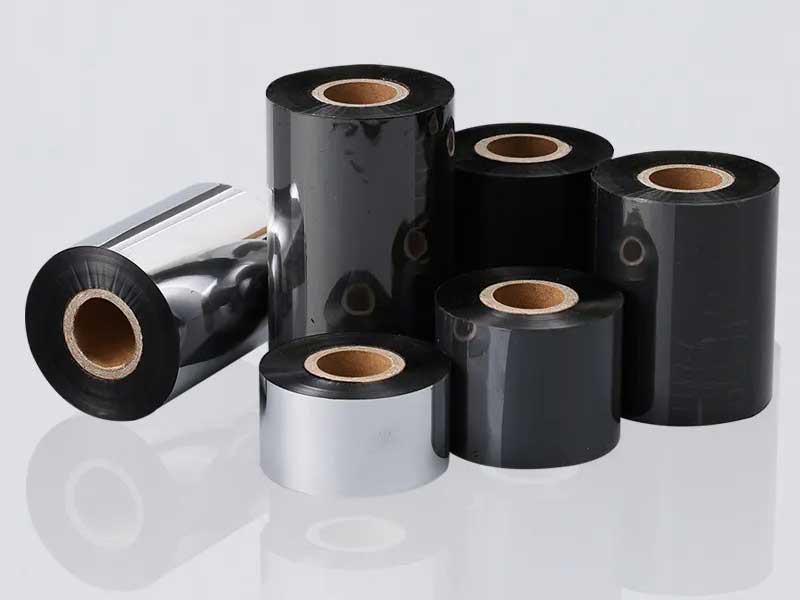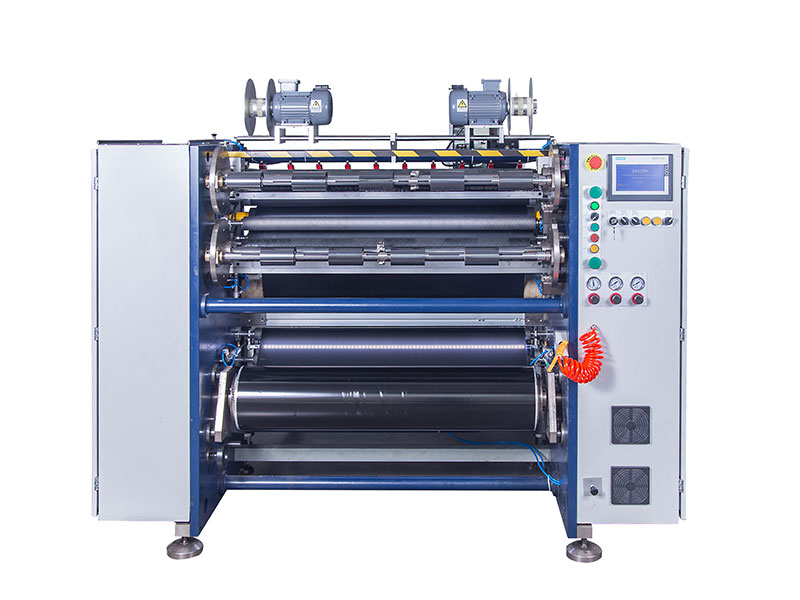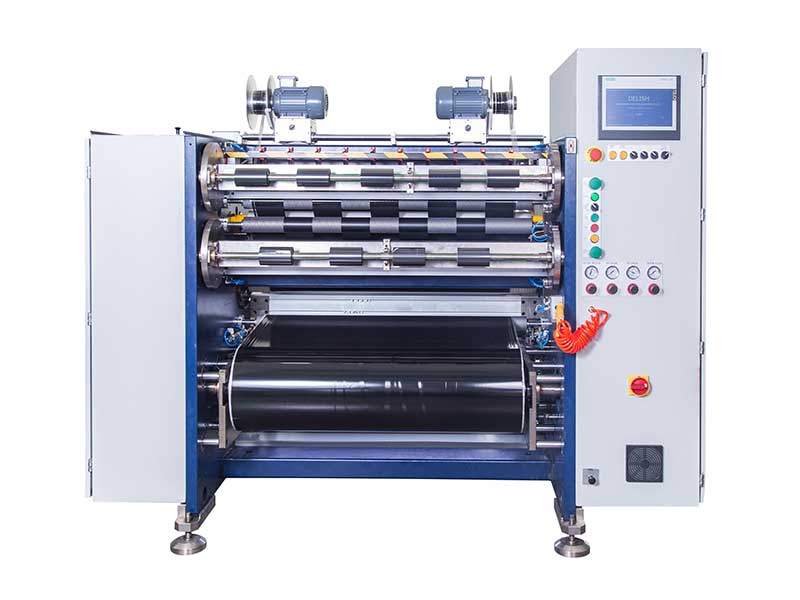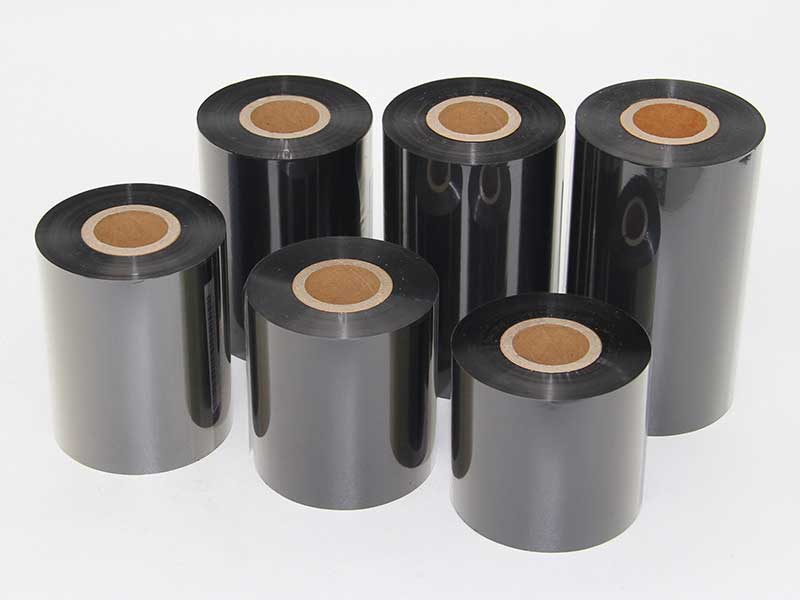As an indispensable core consumable for thermal transfer printing technology, the quality of ribbon directly determines the printing clarity, durability and final application effect of barcodes and labels. As a key back-end equipment in the ribbon production process, the evolution of the technical level of the ribbon slitting machine is profoundly affecting the pattern of the entire industry. Traditional slitting machines have been difficult to meet the market demand for high efficiency, zero defects, small batches, and multiple varieties. Intelligence and automation are becoming the undisputed evolutionary core of the next generation of ribbon slitting machines, and will trigger deep changes in the whole industry.

First, challenges and limitations of the current ribbon slitting machine
To understand the direction of evolution, we must first clarify the existing pain points:
1. High dependence on manual operation: feeding, belting, parameter setting (tension, speed, knife pressure), quality inspection (burr, serpentine, end face neatness), blanking labeling and other links rely heavily on the experience and sense of responsibility of the master, which is inefficient and difficult to ensure consistency.
2. Lagging and subjective quality inspection: Traditional manual visual inspection cannot achieve 100% full inspection, with a high missed inspection rate, and is easily affected by personnel fatigue, emotions and other factors.
3. Black box of production data: Production process data (such as real-time tension, speed fluctuations, tool wear) is not effectively recorded and analyzed, and process optimization and problem traceability cannot be carried out, let alone predictive maintenance.
4. Inefficient order change: When switching orders of different materials (wax-based, mixed-based, resin-based) and different specifications (width, length), it is necessary to stop the machine for tedious mechanical adjustment and parameter exploration, and the preparation time is long, which cannot adapt to the needs of flexible production.
5. Energy consumption and material waste: Due to inaccurate tension control, it is easy to cause scrap products such as broken belts and folds; Lack of intelligent scheduling and tool position planning can also lead to low raw material utilization.

Second, the core evolution direction of the next generation of ribbon slitting machine
The next generation of ribbon slitting machine will no longer be a single mechanical product, but an intelligent system that integrates perception, decision-making and execution capabilities.
Direction 1: Automation
1. Automatic loading and unloading and threading: Integrated AGV/robotic arm to realize automatic handling, positioning and loading of master coils. Intelligent pneumatic or electric guidance system is used to realize one-click automatic belt threading, greatly reducing labor intensity and preparation time.
2. Automatic Parameter Setting and Adjustment (APC): Establish a comprehensive process database. After entering the product specifications (material, width, length), the system automatically calls up the optimal historical parameters (tension, speed, tool distance, pressure) and can fine-tune it according to real-time feedback during the production process to ensure optimal slitting status.
3. Automatic tool change and tool position planning: Equipped with multiple sets of tool holders and a precision tool adjustment mechanism driven by servo motors. When switching orders, the system automatically calculates the optimal tool position combination according to the order width and drives the tool to quickly and accurately position, achieving "one-click order change".
4. Automatic labeling and packaging: After the slitting is completed, the core is automatically labeled (including product information, batch number, and QR code), bagged, and packed to form an end-to-end automated production line.
Direction 2: Deep Intelligence
1. Machine vision online full inspection system: This is the intelligent "eye". At high line speed, real-time detection using high-resolution CCD cameras:
◦ End face quality: Check whether the end face is flush, whether there are burrs, and unevenness.
◦ Serpentine (Run Roll): Detects whether the edge of the film roll fluctuates within the allowable tolerance.
◦ Surface defects: Detect the ribbon coating for scratches, particles, bubbles and other defects.
◦ Immediately alarm and automatic marking (such as spraying and sorting) when defects are found, realizing the leap in product quality from "sampling inspection" to "full assurance".
2. Digital twin and process simulation: Build a virtual model of the slitting machine. Before actual production, process simulation and debugging can be carried out in a virtual environment to predict possible problems (such as tension suddenly), optimize parameters, and reduce physical trial and error costs.
3. AI process optimization and predictive maintenance: This is the intelligent "brain".
◦ Process optimization: Through machine learning algorithms, it continuously analyzes massive production data (temperature, humidity, tension, speed, etc.) to independently find the optimal combination of process parameters under different working conditions to continuously improve the yield and quality.
◦ Predictive maintenance: Real-time monitoring of the operating status (vibration, temperature, current) of key components (such as spindle bearings, tools, motors), predicting their remaining life through AI models, early warning before failures occur, scheduling maintenance, and avoiding unplanned downtime.
4. Internet of Things (IoT) and Data-Driven: All devices are connected to the industrial Internet platform to achieve:
◦ Remote monitoring and O&M: Engineers can monitor equipment status globally through mobile phones/computers, perform remote diagnostics and program updates.
◦ Data traceability: Each finished product volume has a unique "digital ID card" that records all its production data (time, machine, parameters, operator, quality inspection image) to achieve quality traceability throughout the life cycle.
◦ Smart scheduling: Integrate with upper-level MES/ERP systems to receive order instructions, automatically arrange production plans, and optimize production efficiency.

Third, the deep changes in the industry caused by it
The evolution of technology will surely reshape the industry ecology.
1. Production mode change: from "manufacturing" to "intelligent manufacturing"
◦ Changes in labor structure: The demand for ordinary operators has decreased, and the demand for equipment operation and maintenance engineers and data analysts has surged. Human-machine collaboration has become mainstream.
◦ Factory form changes: "black light factories" or unmanned workshops have emerged to achieve 24-hour uninterrupted efficient and high-quality production, greatly reducing labor costs and energy dependence.
2. Business model innovation: from "selling equipment" to "selling services"
◦ Equipment manufacturers are no longer "one-hammer trading", but can provide value-added services such as remote operation and maintenance, process upgrades, capacity leasing, and payment per meter through the Internet of Things platform, and the business model is transformed to servitization.
◦ High-quality production data becomes a new asset that can provide customers with product quality analysis reports to help them optimize their downstream printing applications.
3. Reshaping the supply chain and competitive landscape
◦ Improvement of industry concentration: Leading equipment manufacturers and ribbon manufacturers with R&D and financial strength will take the lead in completing intelligent upgrades, eliminating small and medium-sized manufacturers with backward technology with extremely high efficiency, stable quality and rapid market response capabilities, and accelerating the industry reshuffle.
◦ Customization capabilities become the core competitiveness: intelligent slitting machines make small batches, multi-variety, and fast delivery orders economically feasible. Businesses that can meet customers' personalized customization needs will gain a larger market share.
◦ Closer supply chain collaboration: From master coil suppliers to ribbon manufacturers to end customers, data flows are connected to achieve more accurate demand forecasting and inventory management, making the entire supply chain transparent, efficient, and agile.
Fourth, conclusion
The evolution of the next generation of ribbon slitting machine is essentially to transform the master's experience and eyes into replicable, optimized, and traceable algorithms and data through intelligent and automated technology, and finally achieve the ultimate leap in production efficiency and product quality.
This is no longer a simple equipment upgrade, but a digital revolution of the whole industry chain that runs through R&D, production, management and business models. For ribbon equipment manufacturers, this is a strategic opportunity to establish future market leadership; For ribbon production enterprises, this is the only way to build core competitive advantages and move towards high-quality development. Only by actively embracing this trend can we take the lead in the upcoming industry transformation.

it uses precise cutting to cut out a more economical, more efficient and more environmentally friendly development path for enterprises.
29. December, 2025
Modern high-quality ribbon slitting machine combines automation, intelligence and high precision:
29. December, 2025
Through precise local upgrading, process optimization and intelligent transformation, small and medium-sized enterprises can achieve a great leap in production efficiency with limited resources.
29. December, 2025
The portable ribbon slitting machine, with its exquisite body, leverages the deep transformation of the traditional production and service model.
26. December, 2025
It's not just a superposition of features, but an art of finding a fine balance on the edge of a sharp blade.
26. December, 2025